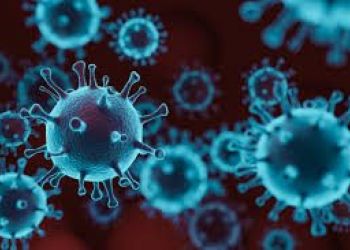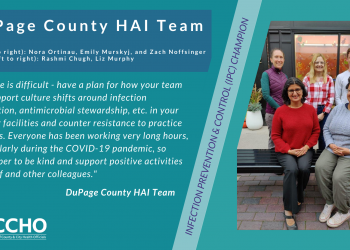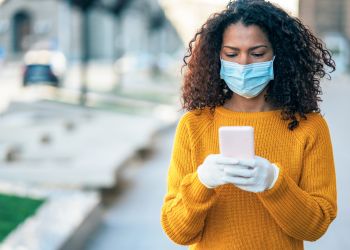The widespread global news of avian influenza in birds has more than likely raised a few hackle feathers from the general public. Let’s first crack open the egg and go over the basics: what is avian influenza?
Avian influenza, or bird flu, refers to a disease in birds caused by certain influenza Type A viruses. Wild water birds are the hosts of these viruses, such as ducks, worldwide. Viruses shed by infected wild birds can infect domestic poultry and other bird and animal species. There are many avian influenza viruses but the one that has gotten a lot of attention recently is a group of viruses called highly pathogenic avian influenza A(H5N1) (“H5N1 bird flu viruses”). H5N1 bird flu was initially detected in North America in December 2021, but it has been circulating in other parts of the world for some time. Since then, these H5N1 viruses have been detected in wild birds in the US and caused multiple outbreaks in both commercial and backyard flocks in multiple states, and are continuing to spread among birds. Bird flu viruses are different from human seasonal flu viruses and do not normally infect people, however, some humans have (rarely) been infected with avian influenza viruses following contact with infected birds or from virus contaminated environments. While CDC believes the risk to the general public’s health from the current H5N1 bird flu viruses is low, some people may have job-related or recreational exposures to birds that increase their risk of infection.
Right now, H5N1 is primarily an animal health issue as the virus is spreading in birds and can be lethal. The U.S. Department of Interior and U.S. Department of Agriculture Animal and Plant Health Inspection Service (USDA APHIS) are the lead federal departments or agencies for outbreak investigation and control of bird flu in wild and domestic birds. To help answer your questions and provide a general overview of avian influenza; compiled below are messaging tips, general information, and responses to a few frequently asked questions.
NACCHO asked influenza subject matter experts from the Centers for Disease Control and Prevention (CDC), how local health departments can prepare for the possibility of human infections with these viruses and how to respond to public questions regarding H5N1.
What can local health departments do to be prepared?
CDC is, and will continue to be, working with state and local health departments to monitor for H5N1 infections in people with exposure to H5N1 viruses. We recommend health departments review the Public Health Monitoring Plan for USDA APHIS Responders to Detections of Avian Influenza Virus in Poultry and CDC’s website on Self-Observation for Illness for Responders to Poultry Outbreaks of Avian Influenza . Additionally, local health departments should coordinate with their state health department to review mechanisms for receiving, monitoring, and responding to dead bird reporting in your area.
Finally, it may also be a good idea to conduct outreach to agricultural organizations in your area to share resources for distribution to your membership.
Examples of resources include:
What information can we put out to backyard poultry owners?
Encouraging backyard poultry owners to practice good biosecurity to reduce the risk of spread to their birds and to people is essential. Biosecurity refers to practices and measures to keep diseases away from birds, property, and people. You can learn more from the USDA APHIS about biosecurity basics on their website. They also provide many different sharable materials at their Defend the Flock Resource Center.
In addition to practicing good biosecurity, the following are recommended for bird owners:
- Prevent contact between domestic birds (poultry) and wild birds and report sick birds or unusual bird deaths to state/federal officials, either through their state veterinarian or through USDA’s toll-free number at 1-866-536-7593.
- Avoid direct contact with wild birds and observe them only from a distance, if possible. Wild birds can be infected with bird flu viruses without appearing sick.
- If possible, avoid contact with domestic birds (poultry) that appear ill or have died.
- Avoid contact with surfaces that may be contaminated with saliva, mucous or feces from wild or domestic birds, if possible.
- If you must handle wild birds or sick or dead poultry, use protective wear (like gloves, a medical facemask, and eye protection), wash your hands with soap and water after touching birds, and change your clothes before contact with healthy domestic poultry and after handling wild birds. Then, throw away the gloves and facemask. CDC developed instructions for people exposed to birds infected with avian influenza viruses at the following website: Information for People Exposed to Birds Infected with Avian Influenza Viruses | Avian Influenza (Flu) (cdc.gov).
Please also see CDC’s Avian Influenza Communication Resources for examples of CDC’s social media messaging for backyard chicken owners.
What are the risks to poultry workers?
Outbreaks of H5N1 bird flu in domestic poultry, in addition to infections in wild birds, are likely to result in increased exposures among some groups of people, which may increase their risk of infection. This would be especially true for people with work-related or recreational exposures to infected birds, particularly poultry workers, outbreak responders, and waterfowl hunters.
There is existing federal guidance around bird flu exposures for different groups of people, including hunters, poultry producers and the general public, as well as health care providers.
CDC also has guidance documents including recommendations for personal protective equipment and information for people exposed to birds infected with bird flu viruses and guidance for testing and treatment of suspected cases to prevent severe illness and transmission to other people.
Do you know whether the current human seasonal flu vaccination would offer any immunity against bird flu?
Human seasonal flu vaccines are designed to protect against four different flu viruses that spread annually among people: an influenza A(H1N1) virus, an influenza A(H3N2) virus and two influenza B viruses. Bird flu viruses are very different from seasonal flu viruses and so seasonal flu vaccine would not be expected to offer protection against H5N1 bird flu viruses that have been detected in wild birds and poultry. However, a recently generated CDC candidate vaccine virus (CVV) against H5 bird flu viruses is nearly genetically identical to the H5 of the viruses detected in North American wild birds and poultry in late 2021 and 2022, and could be used to produce vaccine for humans, if needed.
We do note that it is especially important that people who may have exposure to sick birds get a seasonal flu vaccine, ideally two weeks before their potential exposure, if possible. Human seasonal flu vaccination will not prevent infection with bird flu viruses, but it can reduce the risk of getting sick with human and bird flu viruses at the same time.
Are there any proactive, preventive support measures local health departments can offer large-scale commercial poultry facilities?
There is existing federal guidance around bird flu exposures for different groups of people, including poultry producers. CDC also has guidance documents including recommendations for personal protective equipment and information for people exposed to birds infected with bird flu viruses and guidance for testing and treatment of suspected cases to prevent severe illness and transmission to other people.
Resources
Handout: What To Know About Bird Flu (cdc.gov)
CDC Influenza Landing page: Influenza (Flu) | CDC
CDC-INFO: 800-CDC-INFO (800-232-4636)
Questions or Comments
If you have any questions, concerns, or would like to leave a comment for additional information or resources regarding avian influenza, please use this form to submit your feedback for NACCHO’s Emerging Infectious Disease Team.



